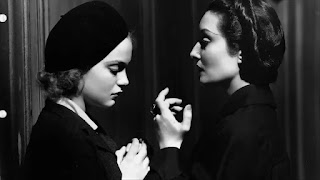Dracula's Daughter (Lambert Hillyer, 1936, USA)
Dracula's Daughter is the first and only direct sequel to Dracula in the Universal canon - picking up directly from the action of the classic 1931 film. While the Dracula character would resurface in dozens of other films, Lambert Hillyer's 1936 film was the only "true" sequel. While officially adapted from a lost chapter of Bram Stoker's classic novel - published as a short story titled "Dracula's Guest" - the film bears more inspiration from Joseph Sheridan le Fanu's 1872 Gothic novella Carmilla. Carmilla is generally regarded as the first lesbian vampire story, and Dracula's Daughter may be one of the first films ever to show some form of lesbian attraction onscreen. Needless to say, this drew some controversy from censors at the time, who were very much aware of the film's undertones.
While the film starts with a misfire involving some goofy Scotland Yard antics that do not fit with the rest of the film, generally Dracula's Daughter is an engaging and moody film. The film is more subtle than other vampire films. While Gloria Holden as Dracula's daughter Countess Marya Zaleska is not Lugosi (surely some audiences at the time were disappointed that the sequel did not feature the legendary Hungarian actor), she ended up becoming a true horror icon in her own right. Her portrayal of Zaleska is cold as it is seductive, and she brings an iconic style and menace to the performance. While some of the other performances, such as those of Otto Kruger as Dr. Jeffrey Garth, are not on par with Holden's, the film generally moves along a good pace. The atmosphere, however, is what makes the film, is it perhaps more dialogue-driven than most Universal horror films and feels more dramatic in tone. Overall, Dracula's Daughter is not a masterpiece but it is well worth visiting.
6/10




Comments
Post a Comment